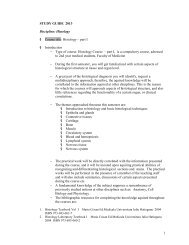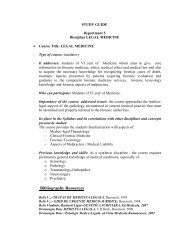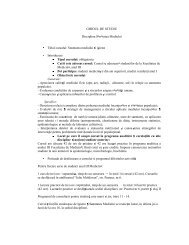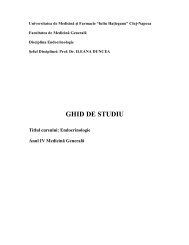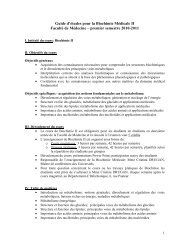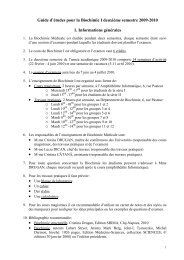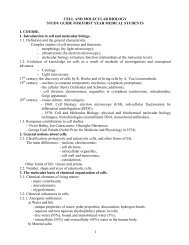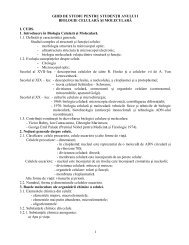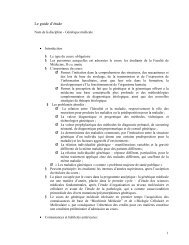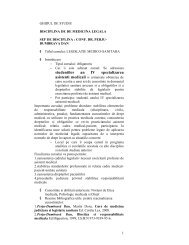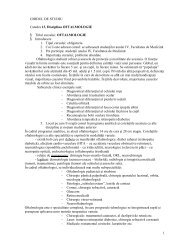Study Guide RADIOLOGY - UMF
Study Guide RADIOLOGY - UMF
Study Guide RADIOLOGY - UMF
You also want an ePaper? Increase the reach of your titles
YUMPU automatically turns print PDFs into web optimized ePapers that Google loves.
<strong>Study</strong> <strong>Guide</strong> – Radiology – Faculty of Medicine - IV th Year 18TOPIC 6. PHYSICAL AND TECHNICAL BASES OFMAGNETIC RESONANCE IMAGINGTable of ContentsI. Basic principlesII. Fundamental sequencesIII. ArtifactsIV. ContraindicationsV. Sample questionsEducational objectives• The student must know:o The operating principle• Description of the steps to be followed in an MRI examination:• patient is placed in a magnet• radio wave is sent• patient emits a radio-frequency signal that is received and used toproduce the information• Image reconstructiono Basics:• Magnetization• Fundamental condition: the existence of an atom with magneticproperties ie odd number of nucleons• Within the human body the basis is the proton: H + (contained in H 2O)• Introduction of H + in an external magnetic field alignment of themagnetic moment with the direction of the vector of the externalmagnetic field:• Parallel (low energy proton population)• Antiparallel (high-energy proton population)• NMV = net magnetization vector• Each hydrogen nucleus describes an elliptical motion around its axis= motion of precession• Precession frequency is given by Larmor equation• Please note:• Protons have a + charge and present spin movement. Becauseof these characteristics they have their own magnetic field.• When placed in an external magnetic field they align with it,some parallel other antiparallel.• Protons move around magnetic field lines and a strongmagnetic field gives a higher frequency motion (relationshipdescribed by the equation of Larmor).• Parallel and antiparallel magnetic fields of the protons maycancel each other, but, as there are more parallel protons withlower energy levels, magnetic forces are not canceled remain.All these parallel protons join the force of their magneticfields along the external magnetic field direction (B0), sowhen the patient is placed within the MRI magnet, it has itsown magnetic field which is longitudinal and parallel to theexternal magnetic field of the MRI equipment. Because it islongitudinal it cannot be measured directly.



